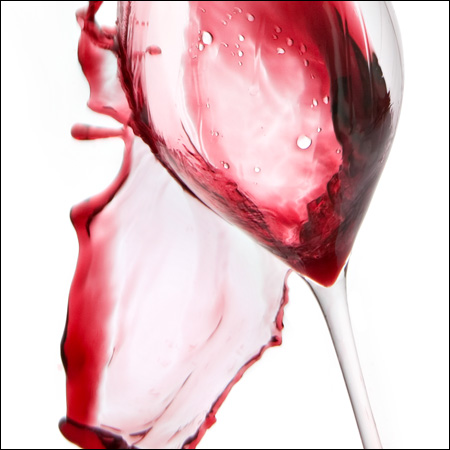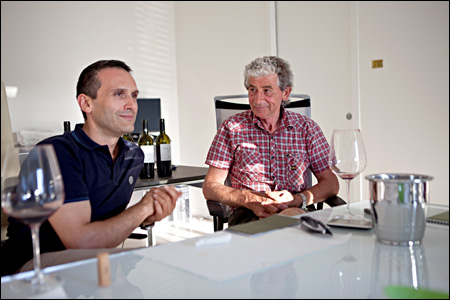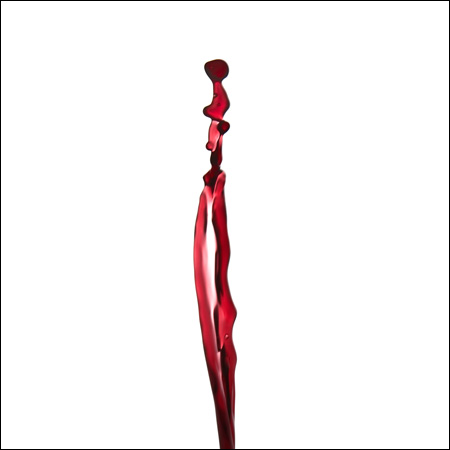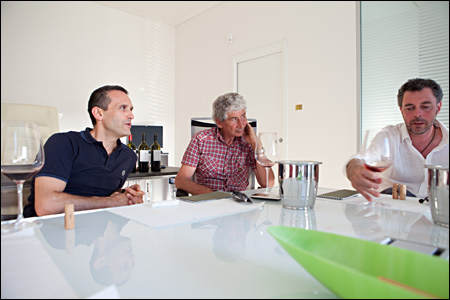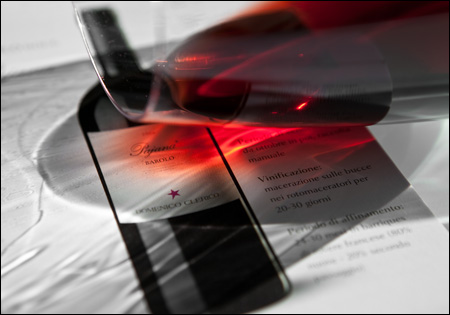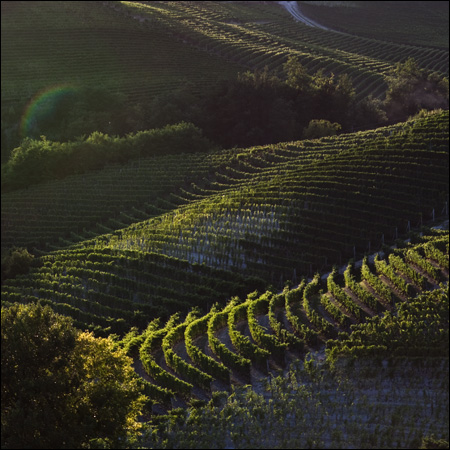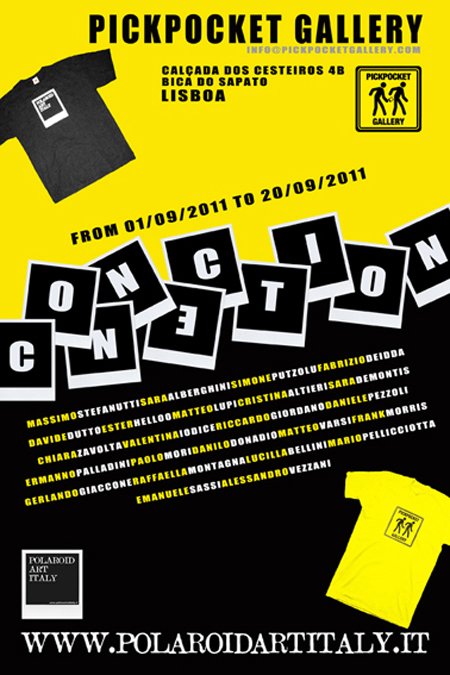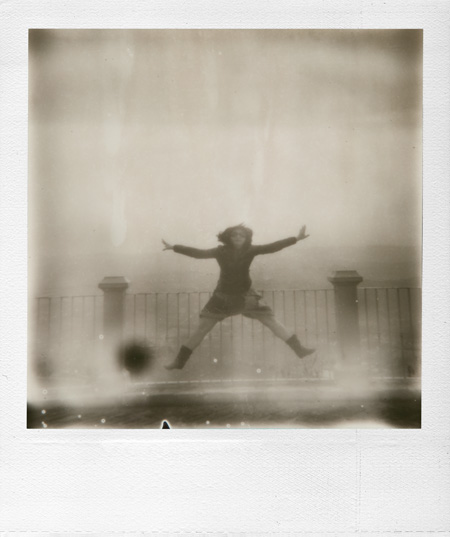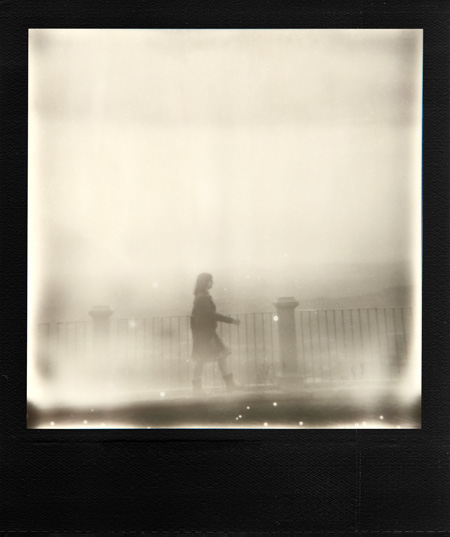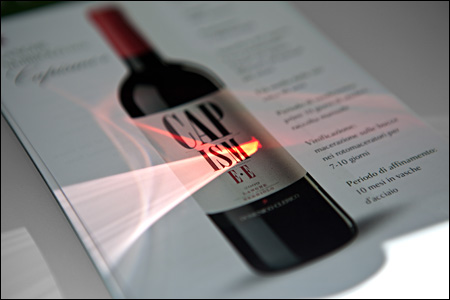
Noi istintivi, spesso spieghiamo concetti e sentimenti profondi senza trovare le giuste parole.
Magari essere poeti.
Però vediamo bene la faccia di chi ci sta davanti e i sui muscoli facciali formare un punto interrogativo.
Allora con vigore qui nelle Langhe potremmo dire “CAPISME!!! Capiscimi!! Fai qualcosa tu e aiutami a spiegarti”.
Così il nebbiolo “Capisme-e” di Domenico Clerico, che proviene da due ettari del vigneto Manzoni, senza troppe parole, senza passaggio in botte, con una macerazione in bucce dai 7 ai 10 giorni, arriverà nel bicchiere chiedendoti di capirlo, di capire il mondo Aeroplan servaj (aeroplano selvatico).
Aeroplan Servaj era il soprannome con cui Clerico Padre chiamava Domenico, ovvero un fanciullo, un ragazzo ed infine un uomo che vola con la fantasia sulle colline che lo circondano ed atterra, talvolta, per qualche secondo per far parte del mondo reale.
Quel mondo parte dalla terra, e i suoi sogni dalla testa, in tempi non sospetti, tempi di avanguardie ed sperimentazione in vigna e in cantina. Domenico doveva stare attento a Clerico Padre nel periodo del diradamento. Nessuno si permetteva ancora di togliere parte dei frutti alla pianta in quei tempi. Allora Domenico aspettava i giorni della gita estiva parrocchiale, quando i suoi genitori si sarebbero assentati, e via a diradare e a nascondere i grappoli recisi. Prima un pezzettino e poi anno dopo anno su tutti i filari. “I vecchi non avrebbero mai concepito il diradamento, tagliare e buttare alcuni frutti della pianta, MAI!! Se lo avessero saputo…”.
Chi veniva dal dopoguerra giustamente non avrebbe mai accettato lo “spreco”.
Insomma l’altro giorno a cavallo di questo mite agosto, sono partito da Fossano con la mia vespa primavera per incontrarmi con Paolo Reina proprietario dell’antica trattoria del Gallo di Gaggiano e Domenico Clerico grande personalità e grande produttore di vini pregiati a Monforte, nella sua nuova cantina che sta per essere inaugurata. Abbiamo degustato dolcetto, barbera, nebbiolo, i baroli per poi finire a cena alla Locanda del Borgo Antico. Non devo dire altro, si capisce che pezzo di Langa ho messo nella mia sacca di fotografo ambulante.
La cantina è un opera mastodontica, integrata nel paesaggio in modo esibizionisticamente discreto e naturale. Da una parte simula le colline, dall’altra la cantina diventa strumento del dopo vendemmia con spazi adibiti ai mezzi, uomini e visitatori, con grande l’utilizzo di vetri e acciaio e forme geometriche che incorniciano il cielo. Ho visto e bevuto questa realtà che è scesa dal trattore e ha posato per un attimo la zappa per utilizzare mezzi nuovi, accettati non senza diffidenza, ma davanti al riscontro qualitativo e pratico ci si piega volentieri. Comunque la vanga e la zappa vincono ancora sul certa tecnologia.
“Via, via sa roba sì! Non voglio vedere il computer sulla mia scrivania. Via, via…”.
Così Domenico con questa cantina mette la cornice al suo mondo, dove il lavoro di generazioni tra i filari ha fatto la differenza. Esibisce l’oggetto con orgoglio, fissando il punto dove insieme alla famiglia sono arrivati.
Capisme-e, diventa quindi la filosofia che deve accompagnarci per andare incontro a questi grandi vini e storie, non certo il rovescio.
UNDERSTANDING THE WILD AIRPLANE
Instinctive people often try to talk about ideas and deep emotions without really finding the right words to do so.
Wishing to be poets.
But we clearly see a question mark taking shape on the facial muscles of whoever we are talking to.
And here in the Langhe hills we could then vigorously say “CAPISME!! Understand me!! Do something and help me to let you understand!!”
That’s how Domenico Clerico’s nebbiolo “Capisme-e” is. It comes from the Manzoni 2 ha vineyard and simply as it is, without passing through barrique barrels and with 7/10 days of maceration in the rotor fermentor, it will spill in your glass asking to be understood. And to understand the world of the Aeroplan Servaj “wild airplane”.
Aeroplan Servaj was the nickname Domenico’s father used to call him as he was a child, a kid and a man who flies with fantasy over the surrounding hills. And then, sometimes, he comes back with his feet on the real world.
His world started up from his land and from his dreams in times of avant-garde and experimentation inside vineyards and cellars. At that time, Domenico had to be careful and hide his practices from Clerico senior during the thinning. None used to tear grapes off back then, so Domenico had to wait for his parents to leave on the church trip and once they were gone he would secretly do the thinning and hide all the cut grapes. The first time he cut just a little bit, then the whole vineyard. “The eldest would have never have understood thinning. To cut and throw away some fruits from the vine? NEVER!! If just they had known…”
Obviously postwar generations would have never agree on “wasting”.
Cut short. Few days ago I left Fossano in a mild august day on my Vespa, heading off to meet Paolo Reina, the owner of Trattoria del gallo, and Domenico Clerico, this charismatic man and amazing wine producer from Monforte. We have been in his brand new cellar, tasting dolcetto, barbera, nebbiolo, several barolos and we ended the night dining at the Locanda del Borgo Antico. Nothing to add: I obviously took that piece of Langa and I put it aside, in my photographer poket.
The cellar is a huge work, it is both showing off and fairly integrated in the landscape. On one side it emulates the hills, while on the other it becomes a mare tool for the whole work that comes after the harvest, with space for things, workers, visitors. Glass and steel are used plenty, as well as geometrical shapes that frame the sky. I felt like I was watching and drinking a world that just got off a tractor, put aside its hoe for a moment and started to use new tools to improve quality. However, hoe and spade are still winning on technology.
“Put this thing away! I don’t want to see any laptop on my desk!”
With this cellar Domenico puts a frame around his world, where several generations of men have been working bringing wine to its bests. He shows the building with pride, gazing at the monument of his family achievement.
“Capisme-e” has then to become the philosophy that introduces us to these great wines and stories. For sure, not the way round.
